Huawei quietly launched its flagship Pura smartphone lineup in April, of which the Pura 70 Ultra is the crown jewel. The 70 Ultra’s most salient feature is a 50-megapixel camera with a lens that extends from and retracts into the phone’s rear, like a high end compact point-and-shoot camera. It’s accompanied by three more cameras: a 3.5x telephoto, an ultrawide and a front-facing ultrawide camera.
Pre-orders for the Pura 70 Ultra pre-orders, as well as the broader lineup, start today (May 2) with regular sales starting from May 22. The Pura 70 Ultra costs 1499 euros (converts to roughly $1,606) for the model with 16GB RAM and 256GB storage. In China, the Pura 70 Ultra starts at 9999 yuan, which converts approximately to $1,380.
I spent a few days testing out the Pura 70 Ultra and had way too much fun with its exceptional camera system. Beyond its versatile camera system, the Pura 70 Ultra packs all the trappings of a smartphone in 2024. It has a large and long-lasting battery complete with super-fast wired and wireless charging, an uber-bright display, a standout design, and is durable despite the presence of a retractable camera. For instance, the Pura 70 Ultra has an IP68 rating for water and dust resistance and uses a second-gen Kunlun glass screen, which Huawei says uses an innovative diamond carbon material that is tough and ultra-scratch resistant.
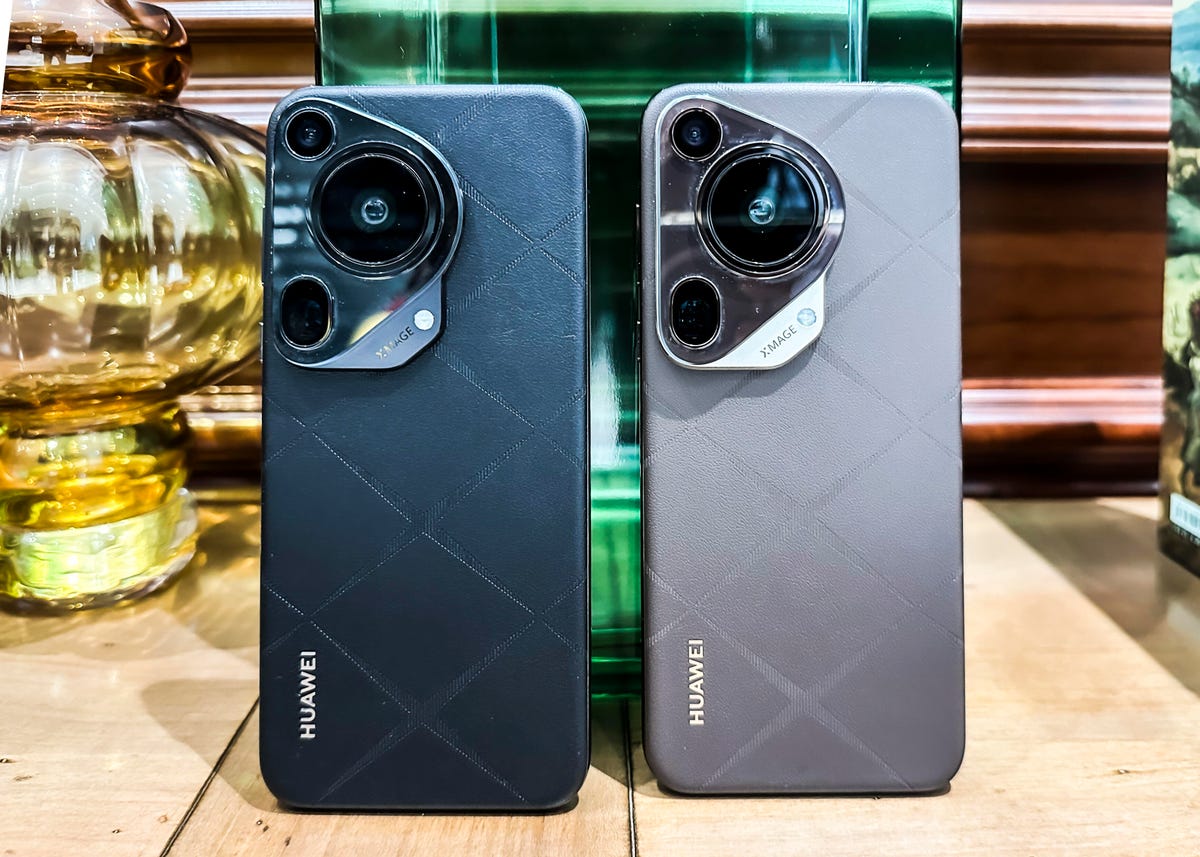
The Pura 70 features a a unique camera bump design, making it easily recognizable from a distance.
However, the Pura 70 Ultra — like every single Huawei phone launched in recent years — lacks Google Mobile Services as a result of US sanctions. Effectively this means apps like Gmail, Google Maps, YouTube and the Google Play Store are not available on the phone, although savvy users can find some workarounds. These same sanctions are also the reason Huawei now uses a China-made chipset to power the Pura 70 Ultra. Huawei declined to name the chipset, but a third-party teardown conducted by research firm TechInsights revealed a Kirin 9010 chipset is under the hood of the Pura 70 Ultra.
For context, Huawei’s former P series, which is now known as Pura, played a significant role in shaping smartphone features. The Huawei P20 Pro, released in 2018, was one of the first smartphones to introduce a dedicated night mode for photography. This feature allowed users to capture better low-light photos by taking a series of images, extending exposure times and combining them together into a single photo that reduces image noise and boosts the brightness. Since then, night mode has become a standard feature in nearly every smartphone, enhancing nighttime and low-light photography in a big way.
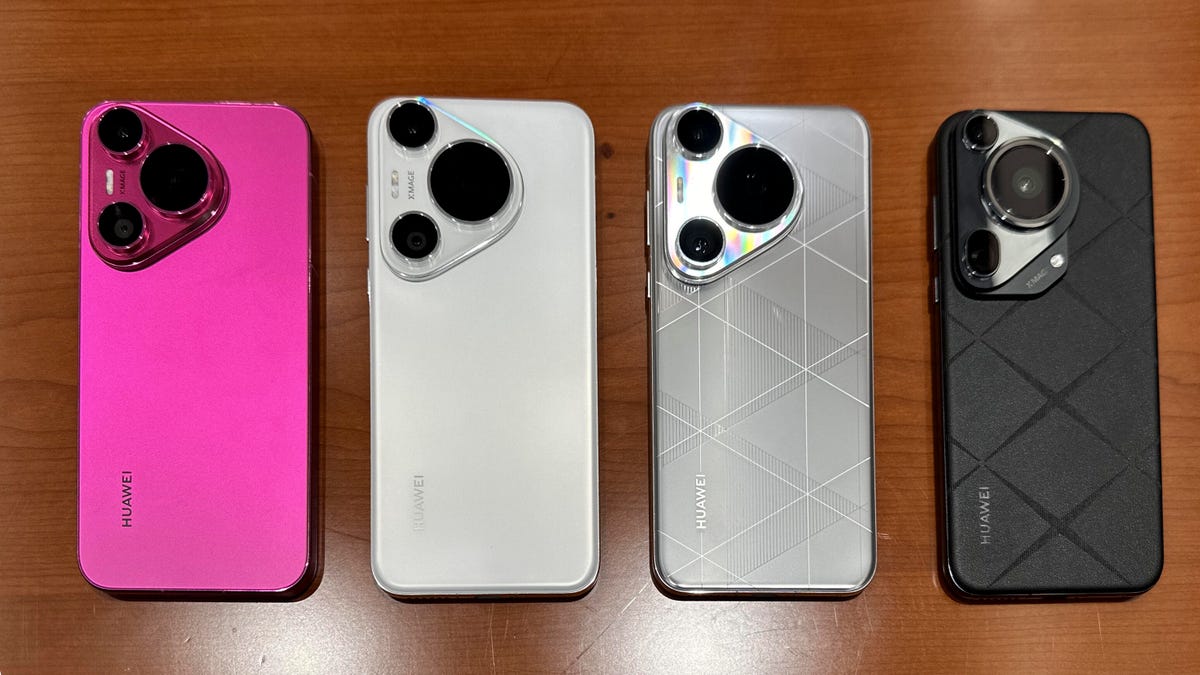
The Pura 70 series consists of four models.
Pura 70 Ultra’s pop-up camera
As mentioned earlier, the highlight of the Pura 70 Ultra is its main camera with a retractable lens, which pops out when you open the camera app. When the lens extends, it makes a satisfying sound, at least to me, that invokes the nostalgia of DSLR on compact point-and-shoot. However, it was difficult for me to hear that subtle mechanical hum unless I placed my ear next to the phone. It’s also worth noting that the circular housing around it has a red ring in homage to Canon DSLR cameras. According to Huawei, the camera and lens is made of more than 100 pieces which Huawei has over 25 patents for.
Initially, I was concerned about the device’s durability, but Huawei said not to worry as the pop-up was tested and rated for 300,000 retraction cycles, which amounts to about 150 per day for five years. The camera also retracts if you drop the phone – a protective feature that I tested out by dropping the phone on a sofa.
Pop-up cameras are by no means new to smartphones, however the Pura 70 Ultra is probably the most elegant implementation that I’ve seen. Fellow Chinese company Phantom debuted the Phantom X2 Pro that had the first pop-up portrait camera. When using the X2 Pro you can see and hear the portrait lens pop out of the back. Oppo and Vivo have also launched pop-out cameras of their own, although those sat on top of the phone and were designed for taking selfies.
Pura 70 ultra cameras
The 50-megapixel main camera manages to cram a 1-inch type sensor and a wide aperture of of f/1.6 to f/4.0 into a device within a width of 8.4mm. The large sensor combined with the wide aperture gathers more light which lets the Pura 70 Ultra take good photos even in dim environments. By comparison, the Galaxy S24 Ultra’s main camera has an f/1.7 aperture, while the Xiaomi 14 Ultra’s main camera has a variable aperture that ranges from f/1.63 to f/4.0.
In my experience, the Pura 70 Ultra took fabulous pictures whether in bright daylight or at night, even in challenging lighting environments. I took a wide variety of shots thanks to the wonderful and versatile Pura 70 Ultra’s camera system. Here are photos from the 70 Ultra.
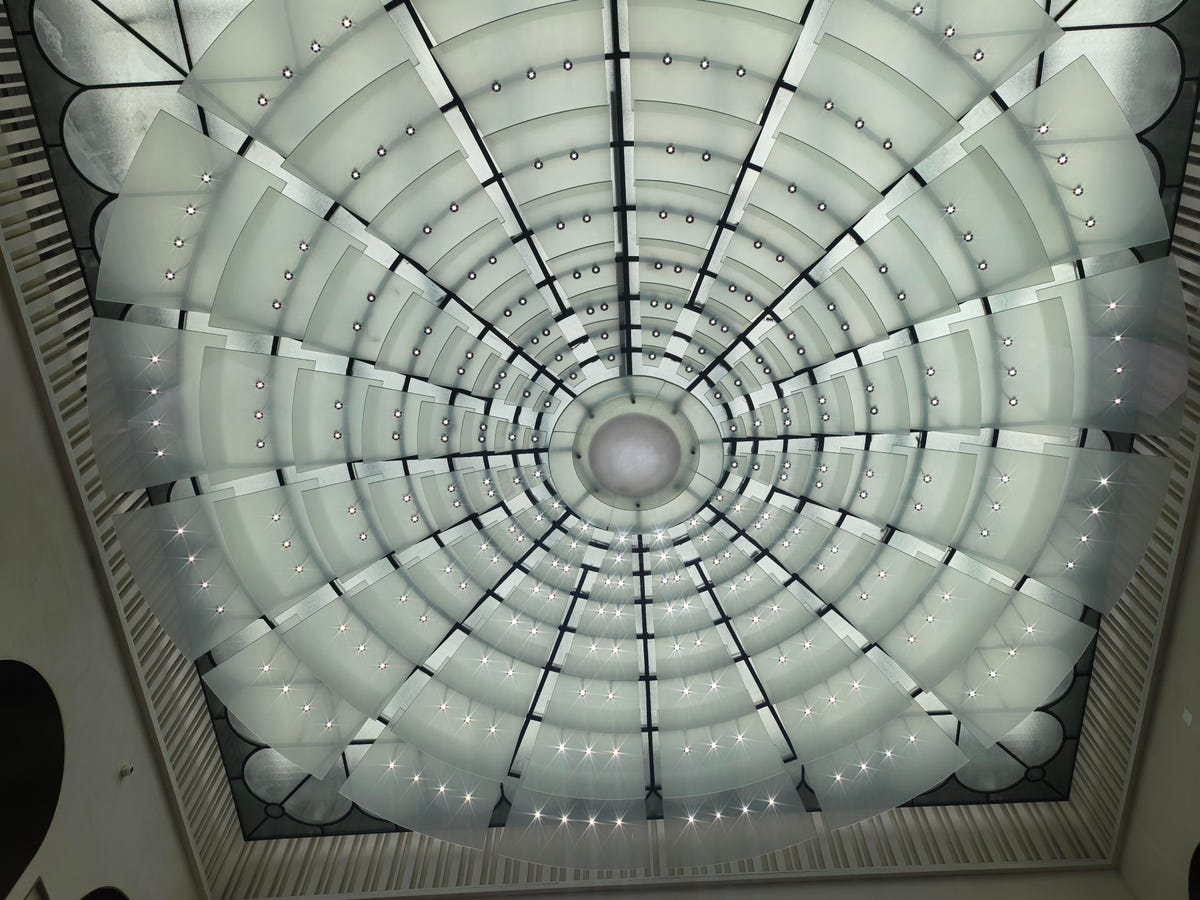
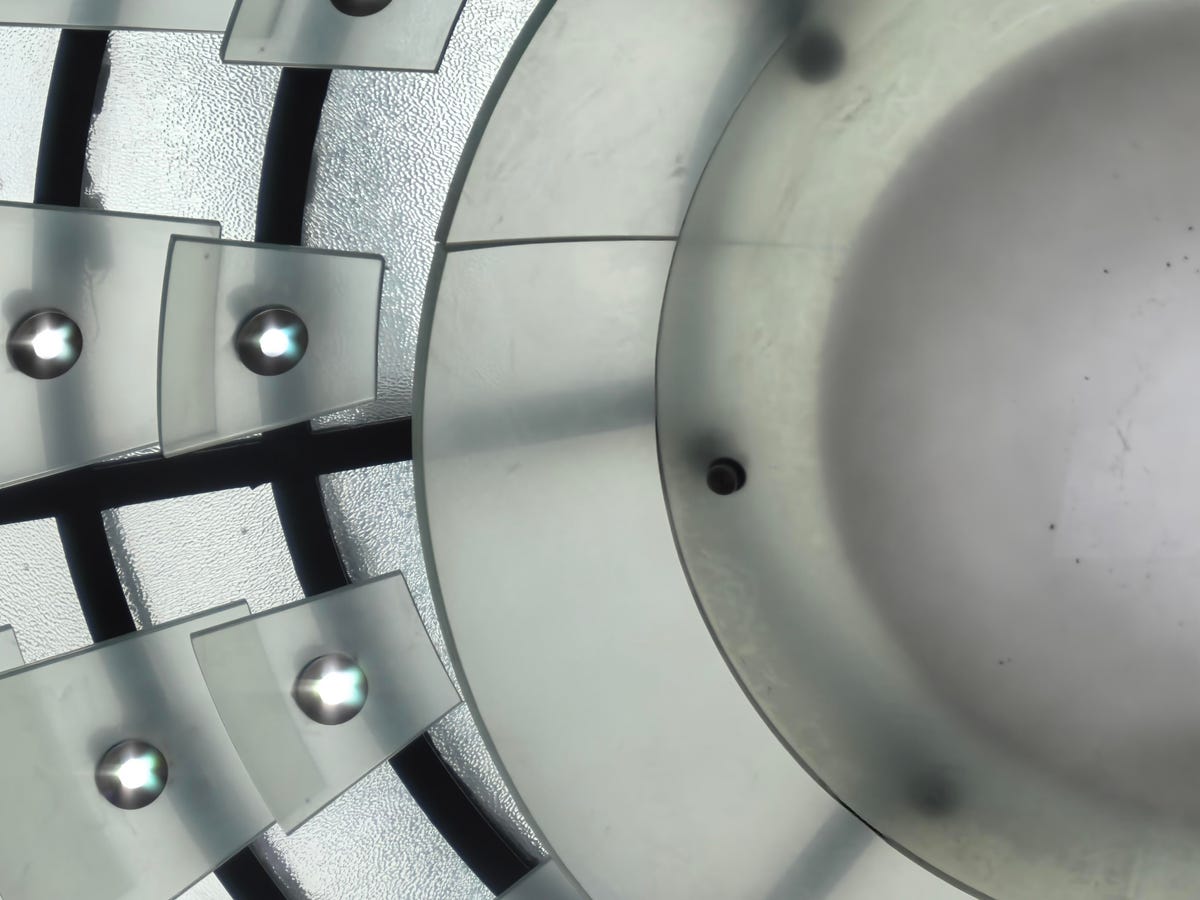
Zoomed in 10x
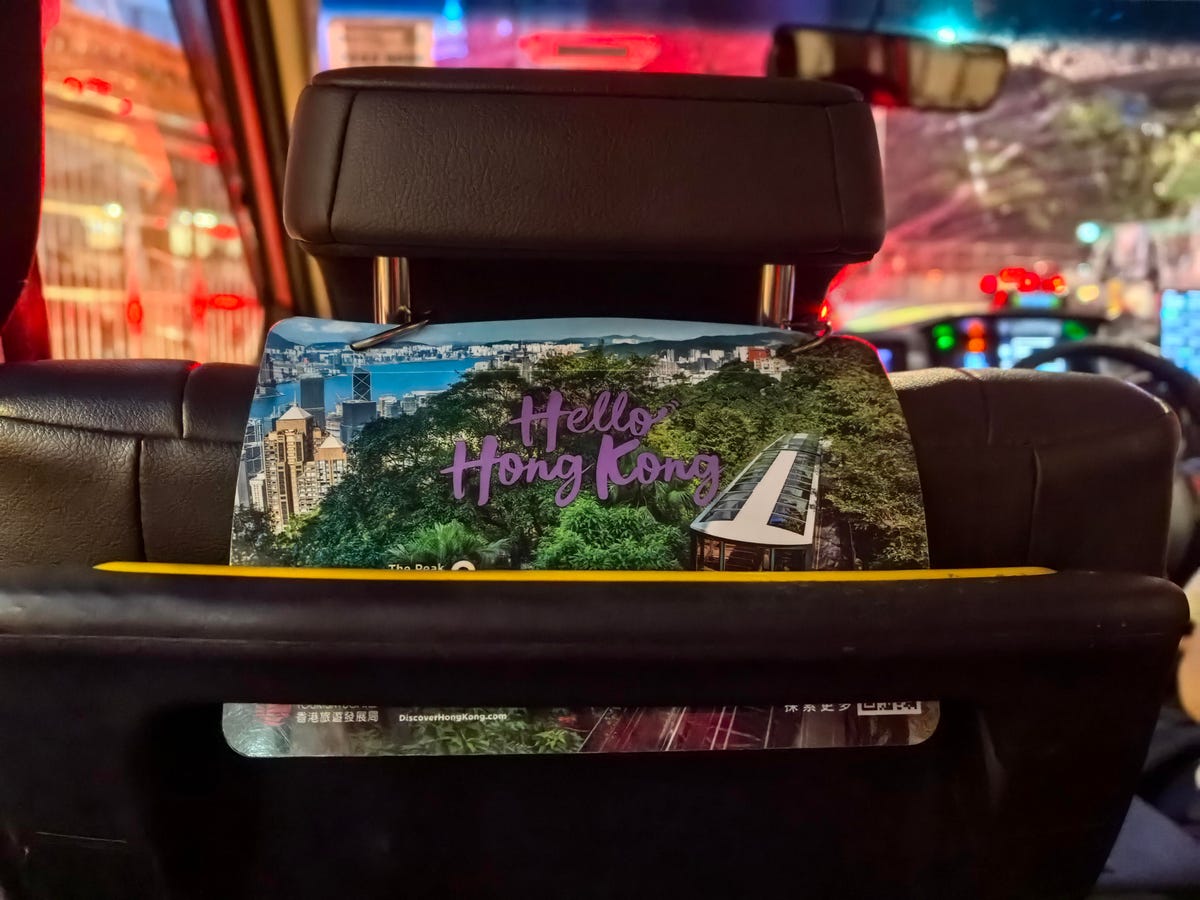
This picture was taken inside a Hong Kong taxi at night. The Pura 70 Ultra managed to capture a colorful image with vibrant greens and blues, even though I could barely see the detail and depth of the image in person.

A selfie taken inside the taxi. The camera managed to bring out the richness of my silk shirt even in a dark environment. I absolutely love that the Pura 70 Ultra uses an ultra-wide lens for its front-facing camera.
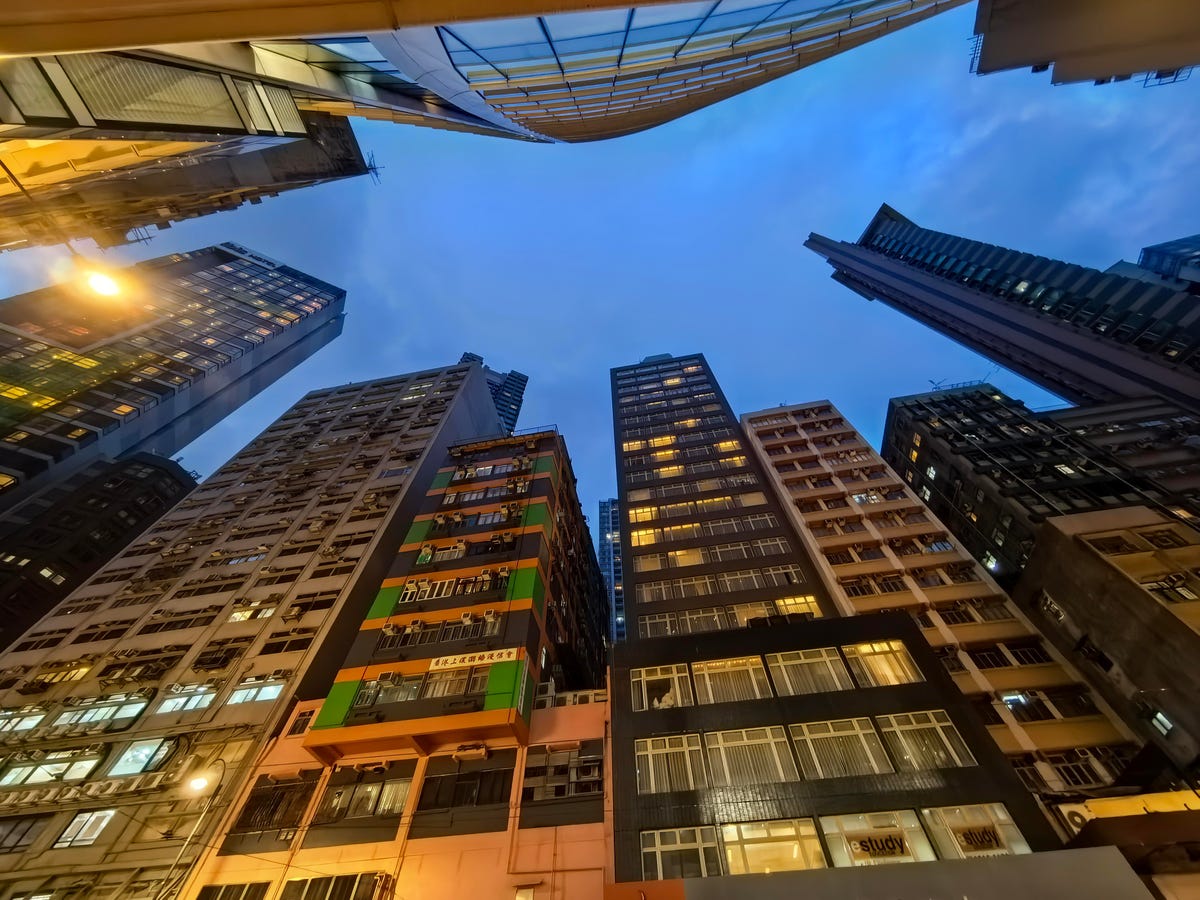
Buildings lining a street in Hong Kong’s Sheung Wan district. I took this image using the wide-angle camera after sunset.
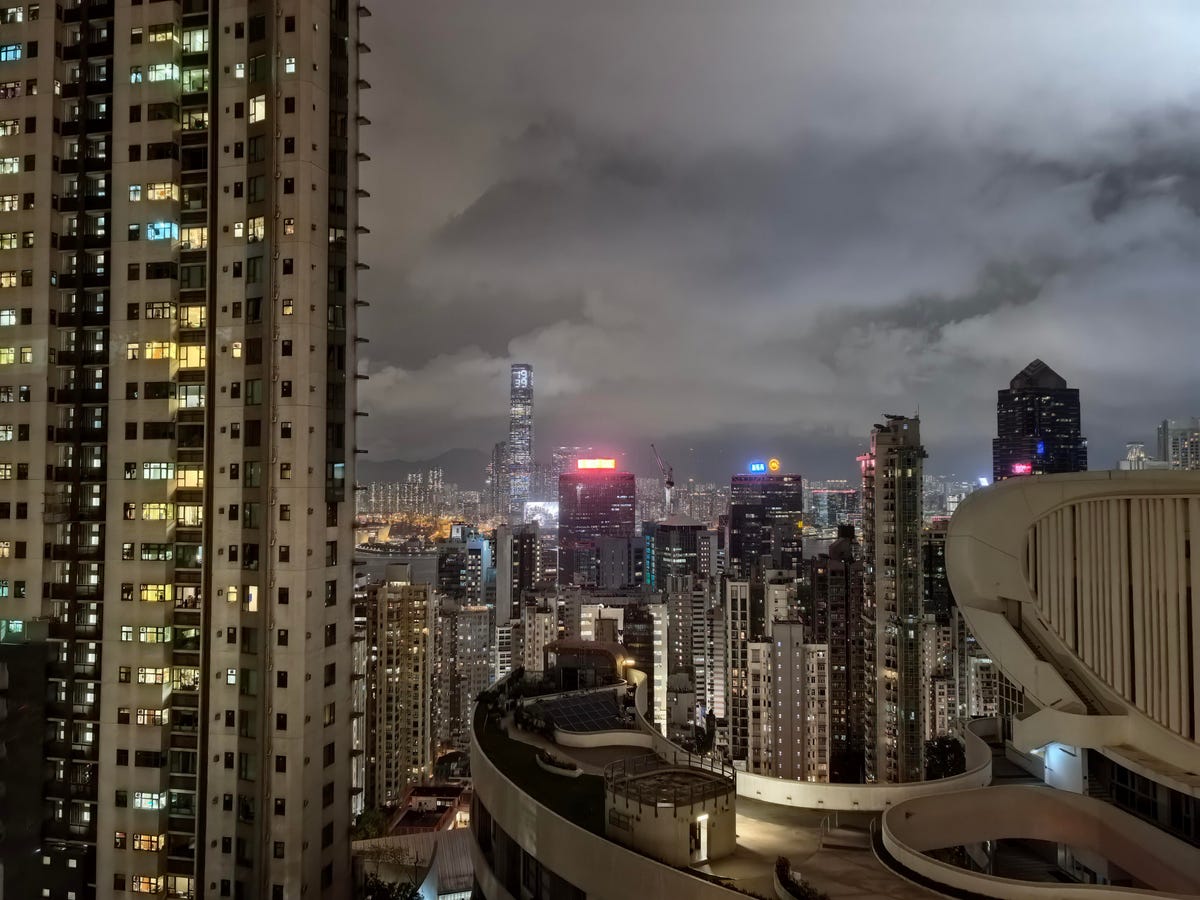
Taken on default settings (1x). Notice a red sign on top of the building in the distance.
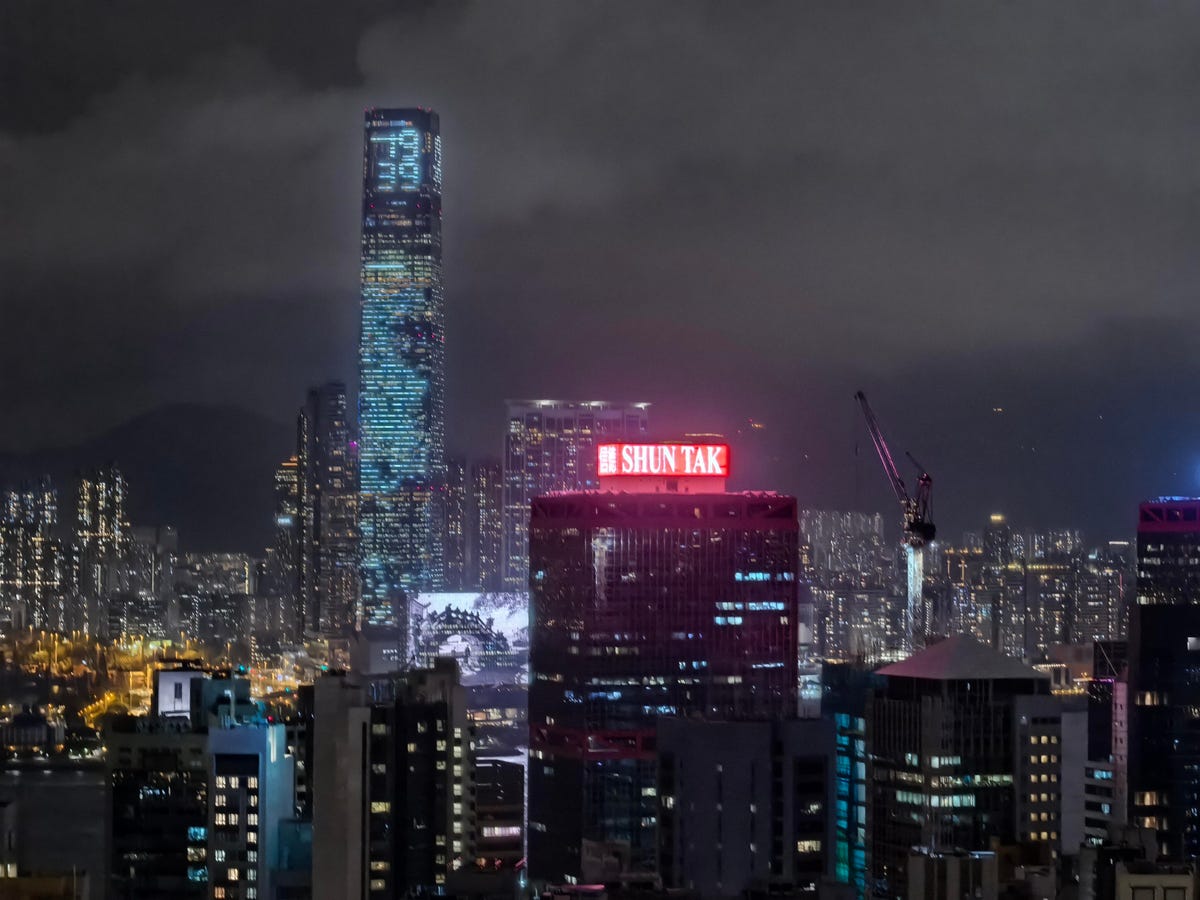
Zoomed in 2x/3.5x
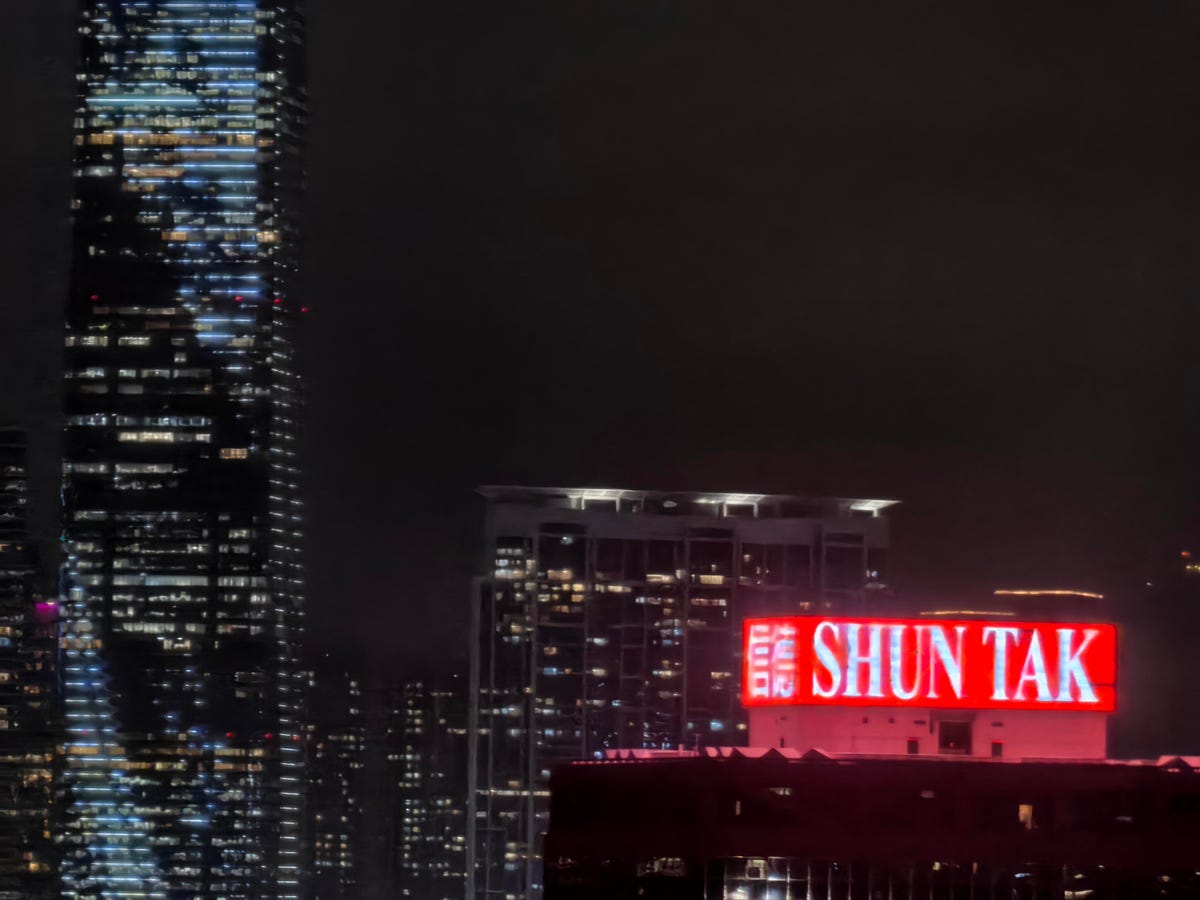
10x zoom example at night
However, out of all the things I could do with the camera, I had the most fun using the 3.5x telephoto camera. I could take pin-sharp pictures using 3.5x optical zoom or even capture objects in the distance with 100x digital zoom, but super macro mode was one of my favorite ways to use the camera. I could also zoom into everyday objects such as fruits of a pair of jeans to take in details I’ve never seen before.
Although it’s not as hyper-detailed as the cameras on the Oppo Find X3 Pro (which delves into microscopic territory), I was truly impressed by what I could capture. I could envision how it opens up creative possibilities. Some of the details captured by the camera were difficult or even impossible to see with my naked eye. After a day or so of using super macro mode, I would see an object, say a piece of fruit, and wonder what it would look like zoomed in 10x.
For instance, here’s a picture of the jeans I was wearing, taken indoors in a rather dim environment.
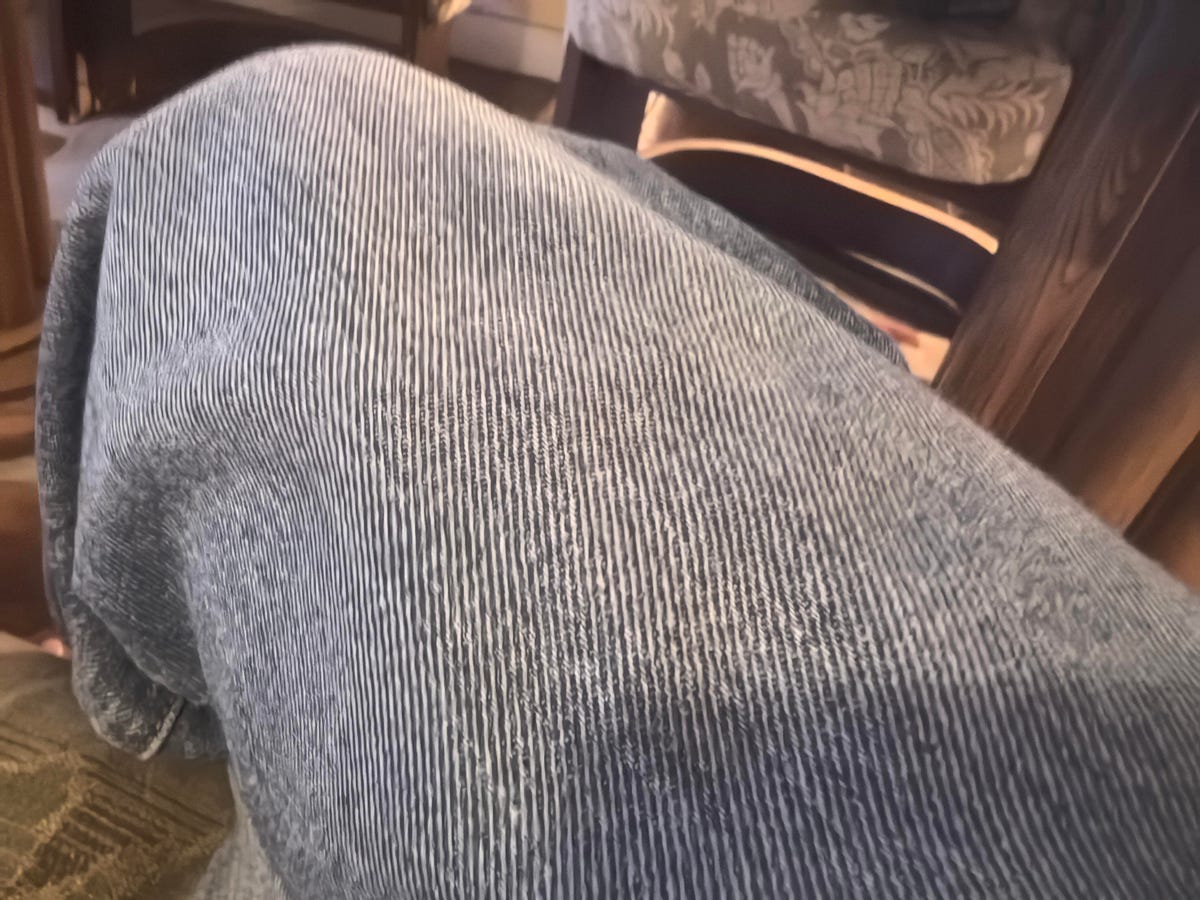
My denim jeans.
Now here’s a zoomed in image of that same pair of jeans using super macro mode.
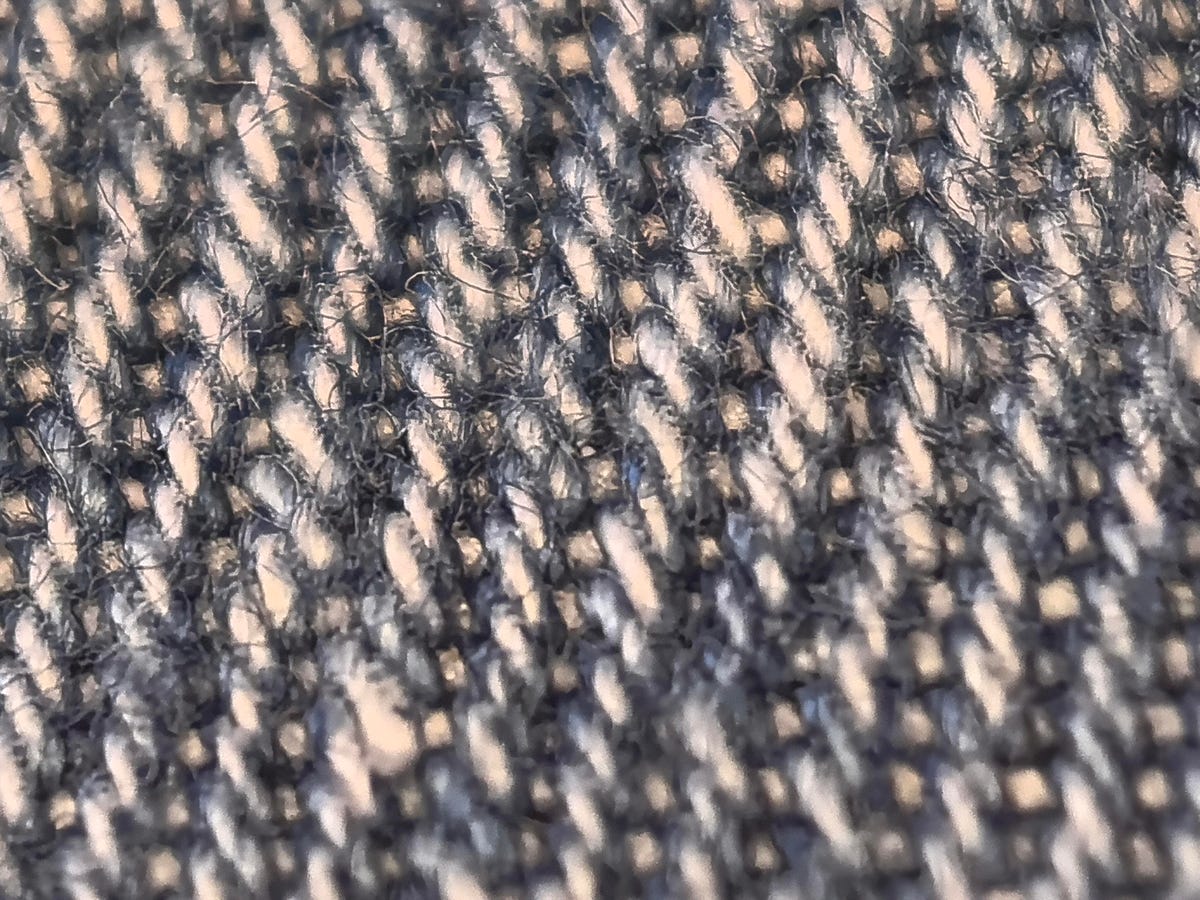
Zoomed in 10x with super macro mode activated. I definitely couldn’t see any of this detail in the weaving with my naked eye.
Now here’s a scarf lying on a table.
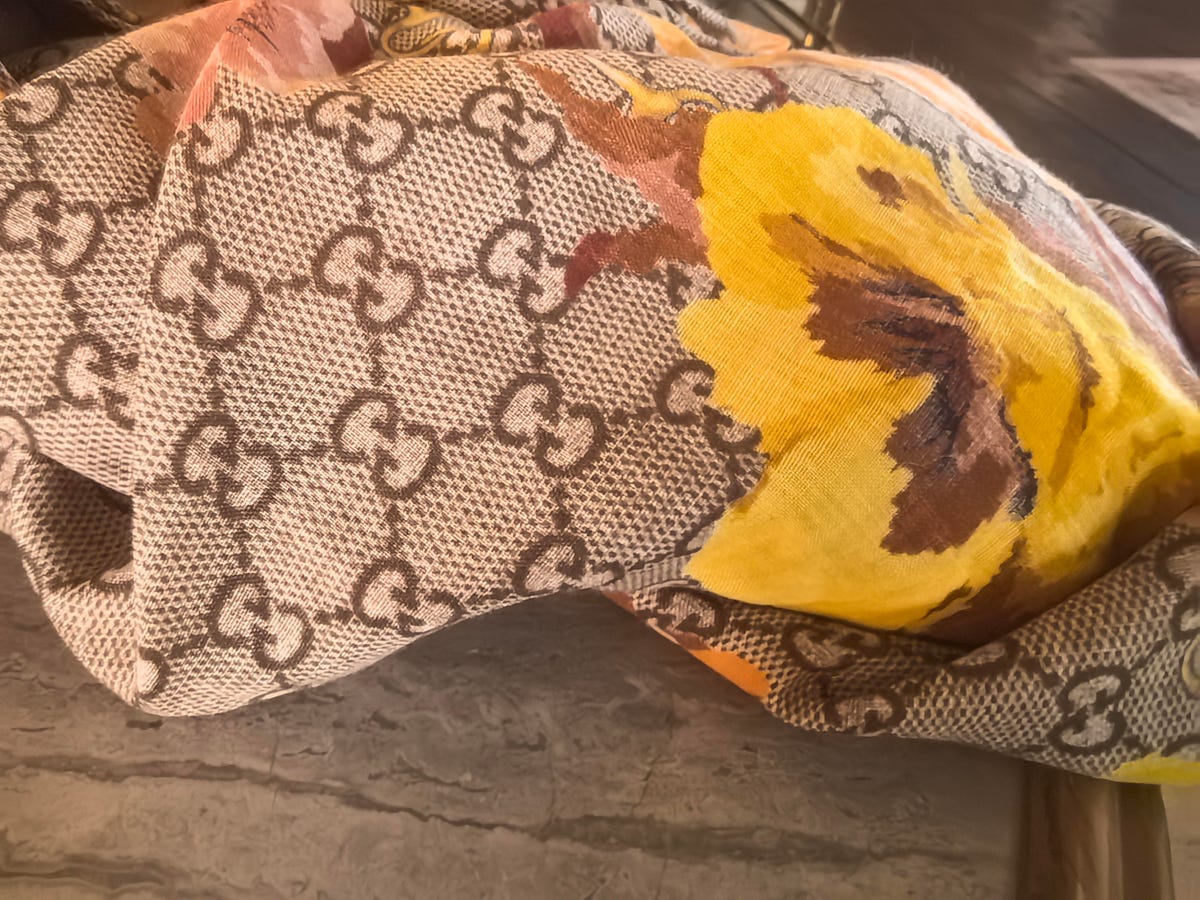
Taken on default settings
And once again, here’s the weave behind the make the scarf a wearable garment. Shocking, right? It was tricky to take a clear photo when I was on 10x zoom since I had to keep my hand still in order to take a clear photo with 10x zoom.
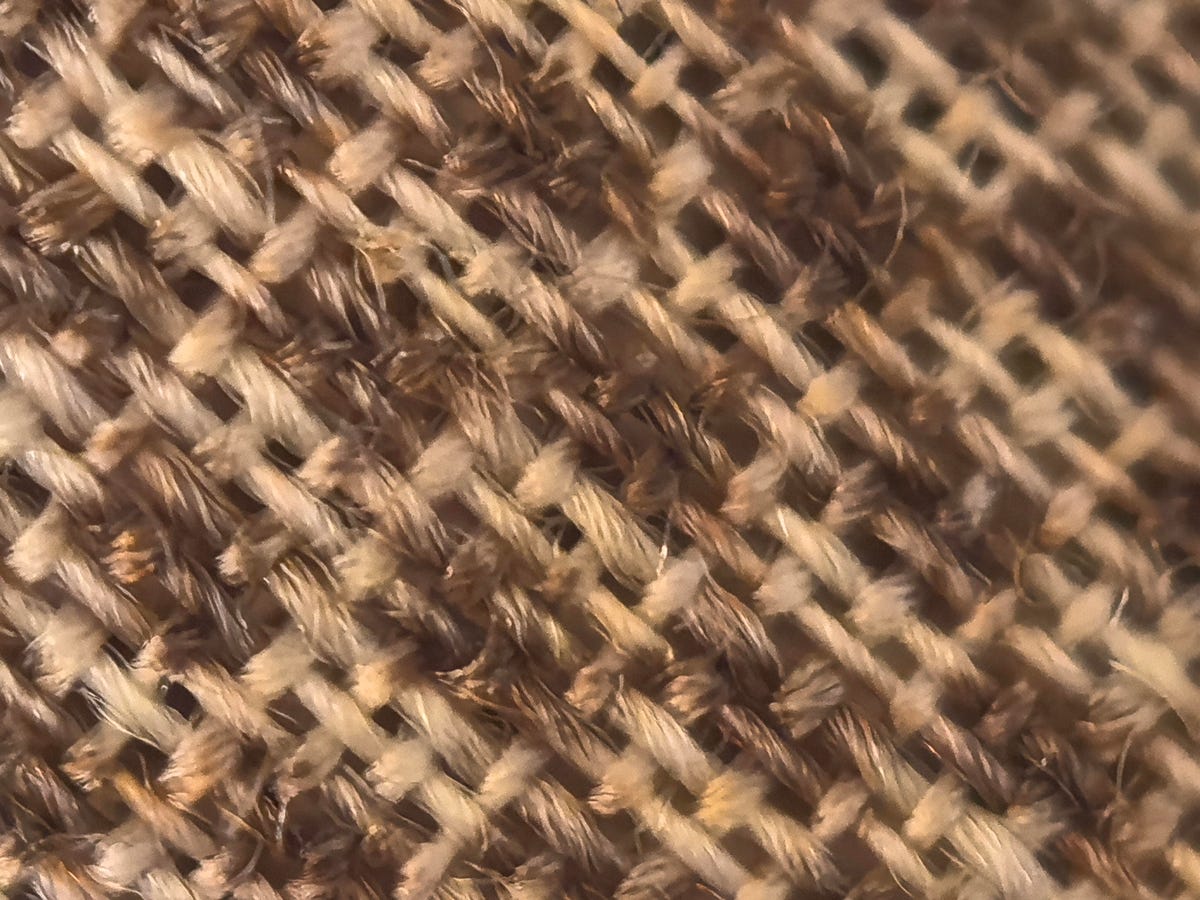
Taken on 10x zoom. You can see the weave of the scarf and can tell its a loose weave, as you can see those miniature holes in between it.
Here’s a picture of my dog Rocky. He’s on of my favorite subjects. I can tell how good a phone is at capturing a color accurate image when I take pictures of Rocky due to the various shades of golden brown on his coat. The picture below is an impressively accurate representation of what his coat looked like in person with that lighting.
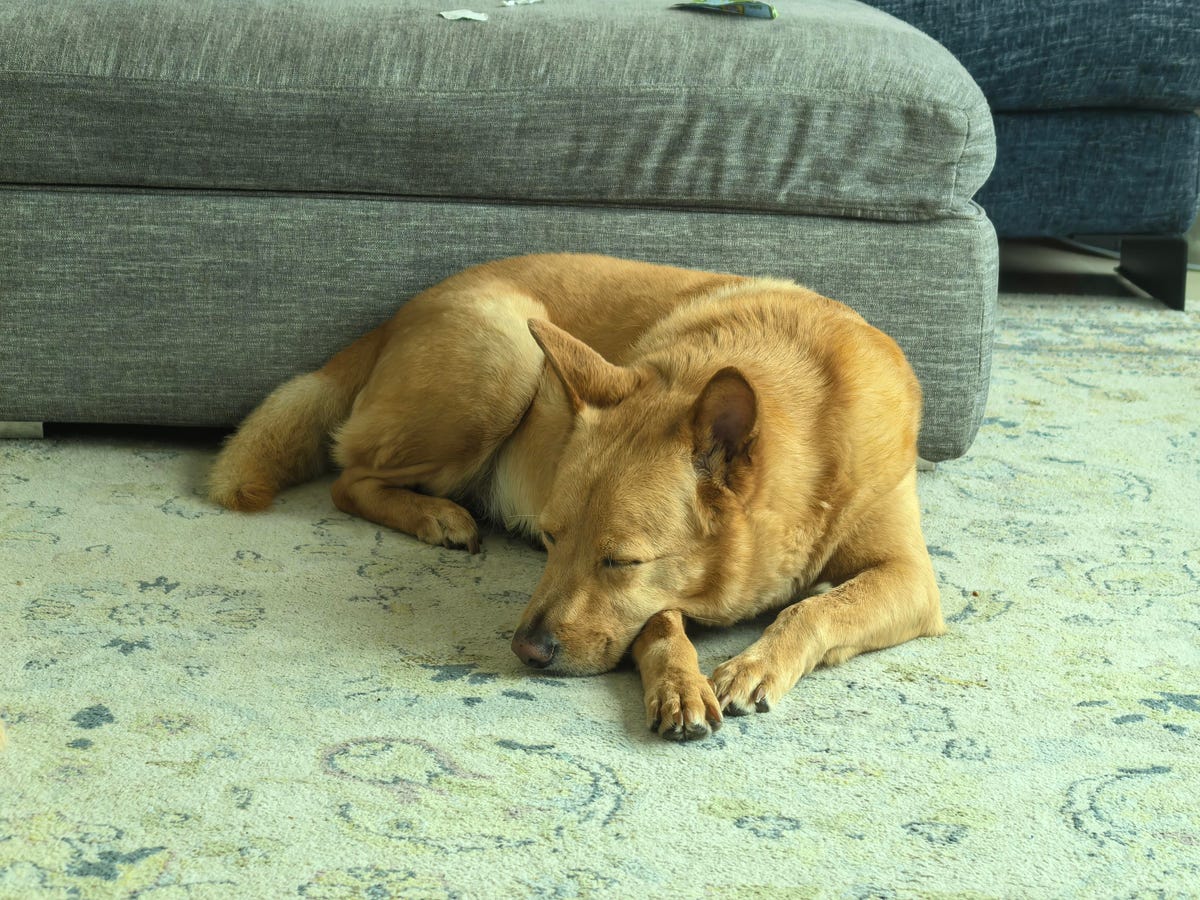
Taken indoors in a bright room.

Zoomed in slightly
Again, I couldn’t resist using the telephoto camera as well as super macro mode to capture Rocky’s coat. Thankfully, I didn’t see any ticks.

Strands of my dog’s fur coat captured with super macro mode turned on and 10x zoom.
Pura 70 Ultra Battery
The Pura 70 Ultra comes with a 5,200 mAh battery. In my limited time, I found the battery lasted me a full day and still had charge leftover. However, since the phone didn’t have most of the apps I’m accustomed to using daily, like Instagram or Google Calendar, it’s fair to say that I used the X70 Ultra lightly.
I used it to take pictures, read emails, make calls and watch streaming videos. When the phone was completely dead, I replenished it with the 100W power adapter provided inside the box. Within 15 minutes, the battery went from empty to 40% and within 30 minutes it hit 70%. For comparison the Galaxy S24 Ultra which has 45W wired charging added 45% in 30 minutes. In addition to that, the phone supports 80W wireless charging as well as 20W reverse wireless charging, which means the Pura 70 Ultra can charge other devices, like a pair of earbuds for example.
Read More: Google’s Pixel 8 Blurs the Line Between Reality and Fantasy
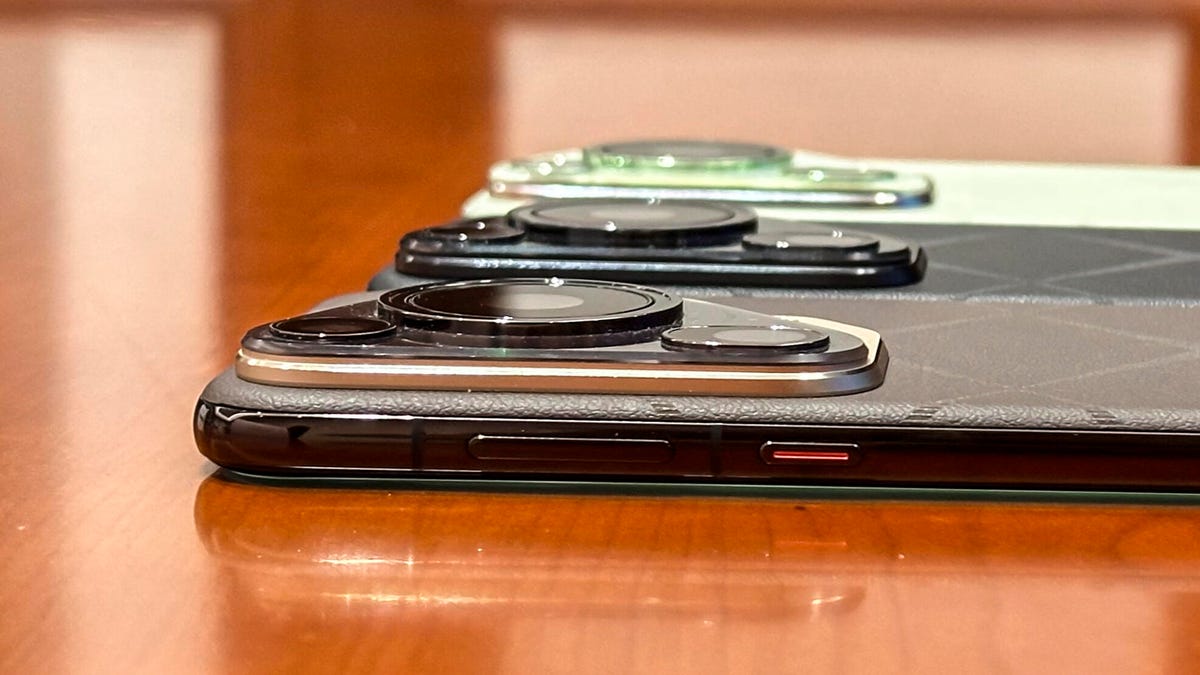
Pura 70 Ultra’s (not so) mysterious processor
Huawei was tight-lipped about the processor powering its fanciest new flagship phone. However a teardown of the device conducted by research firm TechInsights reveals its runs on the Kirin 9010 chipset made by China’s SMIC, likely using the cutting-edge 7-nanometer process. For reference the Qualcomm Snapdragon 8 Gen 3 chip found in phones like the Galaxy S24 Ultra and OnePlus 12 has a 4-nanometer process.
Since the usual benchmark apps, Geekbench 6 and 3D Mark, were not available on the Huawei App Gallery for performance testing, I used the Antutu Benchmark app to start a 45-minute stress test, however the device’s temperature rose over 45 degrees Celsius (113 degrees Fahrenheit). The app automatically stopped the test saying the temperature passed the safety threshold of 45 degrees celsius.
I also leaned on my day-to-day experience for judging the overall performance. The camera app launches quickly, multi-tasking was smooth, graphic-intensive gameplay also went on without a hitch, and I could easily switch websites between landscape and portrait mode without any lag.
Pura 70 Ultra AI features
Although Huawei didn’t mention AI all that much during the media briefing, the Pura 70 Ultra has a bevy of AI features sprinkled throughout the user experience. One of the most noticeable features was Snapshot and Ultra Snapshot, which apparently can take crisp images even if the object is moving at a few hundred miles per hour – like F1 race car fast. According to Huawei, Snapshot fuses together the camera’s hardware capabilities with proprietary AI software algorithms. The phone captures and combines the same image taken with long and short exposures, and then goes on to fine-tune it to create a sharp image. I haven’t tried it yet, but look forward to testing it for my full review.
The Pura 70 Ultra also has a basic photo editing tool that can remove unwanted objects from a photo in a matter of seconds. However the space leftover was blurry and appears to have been tampered with. Unlike Google’s Magic Editor, the phone couldn’t generate a background to fill that empty space with realistic-looking content. Speaking of AI, I was surprised to see Microsoft’s Bing available as a pre-loaded app, which means users get access to GPT-4, Open AI’s most advanced large language model.
Read More: Google’s Pixel 8 Blurs the Line Between Reality and Fantasy
Overall thoughts
The Pura 70 Ultra is a boundary-pushing Android phone with an exceptionally versatile and high-quality camera system. Apart from the wonderful pictures, the Pura 70 Ultra has a lot else going for it from a fashion-forward design, sharp display, long-lasting battery, and even a smooth overall user experience with the the Kirin 9010, a China-made chipset. However, even though Huawei has made strides in bringing more apps to the Huawei App Gallery, it’s still missing many of the apps that I would use on a daily basis as a result of US sanctions. It’s a big factor to overlook for a phone that retails at 1499 euros. To me, that’s the crucial missing piece in an otherwise excellent phone.
Pura 70 Ultra vs. Xiaomi 14 Ultra vs Galaxy S24 Ultra
| Huawei Pura 70 Ultra | Xiaomi 14 Ultra | Samsung Galaxy S24 Ultra | |
| Display size, tech, resolution, refresh rate | 6.8-inch AMOLED, 2,844 × 1,260 pixels 1-120Hz adaptive | 6.73-inch AMOLED; 3,200 x 1,440 pixels, 1-120Hz adaptive refresh rate | 6.8-inch AMOLED; 3,120×1,440 pixels; 1-120Hz adaptive refresh rate |
| Pixel density | N/A | 522 ppi | 501 ppi |
| Dimensions (inches) | N/A | 6.35 x 2.96 x 0.36 in | 6.40 x 3.11 x 0.34 in. |
| Dimensions (millimeters) | N/A | 161.4 x 75.3 x 9.2mm | 163 x 79 x 8.6 mm |
| Weight (grams, ounces) | 226g (7.97) | 220g (7.8 oz.) | 233 g (8.22 oz.) |
| Mobile software | EMUI 14.2 | Android 14 | Android 14 |
| Camera | 50-megapixel (wide/main), 40-megapixel (ultra-wide), 50-megapixel (telephoto) | 50-megapixel (wide), 50-megapixel (ultrawide), 50-megapixel (3.2x telephoto), 50-megapixel (5x telephoto) | 200-megapixel (wide), 12-megapixel (ultrawide), 10-megapixel (3x telephoto), 50-megapixel (5x telephoto) |
| Front-facing camera | 13-megapixel (ultra-wide) | 32-megapixel | 12-megapixel |
| Video capture | 8K | 8K | 8K |
| Processor | Kirin 9010 | Qualcomm Snapdragon 8 Gen 3 | Qualcomm Snapdragon 8 Gen 3 |
| RAM/storage | 16GB RAM + 256GB | 16GB + 512GB | 12GB RAM + 256GB, 512GB, 1TB |
| Expandable storage | None | None | None |
| Battery | 5,200 mAh | 5,000 mAh | 5,000 mAh |
| Fingerprint sensor | Under display | Under display | Under display |
| Connector | USB-C | USB-C | USB-C |
| Headphone jack | None | None | None |
| Special features | IP68 rating, satellite connectivity, 2,500 nits peak brightness, Crystal Armor Kunlun Glass, 100W wired charging, 80W wireless charging, 20W reverse wireless charging, 3.5x optical zoom, 100x digital zoom | IP68 rating, 3,000 nits peak brightness, Xiaomi Shield Glass Front, 4 Generations of Android support, 90W wired charging, 80W wireless charging, Wi-Fi 7, Dolby Vision, HDR10+, HDR10, HLG, 16-bit Ultra Raw photos, | Titanium frame, 2,600-nit peak brightness; 7 years of OS and security updates; 5G (mmWave); IP68 water and dust resistance; wireless PowerShare to charge other devices; integrated S Pen; UWB for finding other devices; 45W wired charging (charger not included); Galaxy AI; Wi-Fi 7; Gorilla Glass Armor cover glass |
| Price | 1499 euros (converts to roughly $1,606) | Converts to $1,646 (512GB); £1,299 (512GB) | $1,300 (256GB) |
Editors’ note: CNET used an AI engine to help create several dozen stories, which are labeled accordingly. The note you’re reading is attached to articles that deal substantively with the topic of AI but are created entirely by our expert editors and writers. For more, see our AI policy.




















+ There are no comments
Add yours